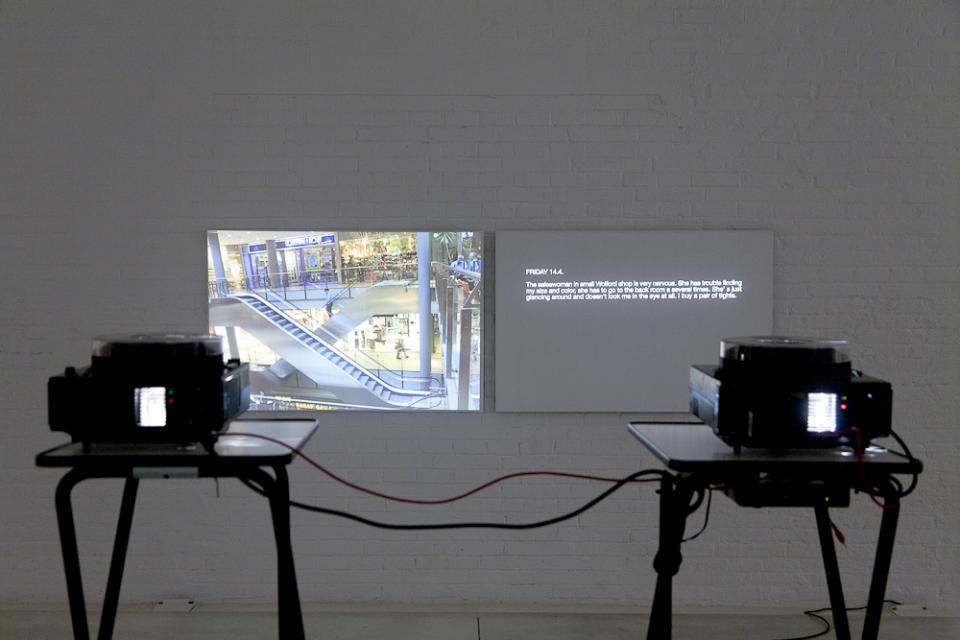Prologue: Slight Chance by Pilvi Takala
The program The Text: First Notions and Findings is about the emotional relationships that are established between the person writing and the person reading. Reading a few pages of a novel in bed just before going to sleep, we allow the words to inundate us. In contrast, the exhibition offers a colder distance; we do not stroll dreamily through it, but in it we also find conceptual and passional challenges that allow us to escape from the usual rhythm.
The Text: First Notions and Findings is made up of five exhibitions, work groups, complementary activities and an educational project. The five exhibitions are organized like a book, beginning with a prologue —this exhibition— and ending with an epilogue.
The prologue is a type of text that delegates the presentation and opening of the book to another. A third person capable of presenting the intentions of the main narrative in a way that is indirect but essential. A beginning that marks temporary situations: the book contains the book itself plus another perspective at the very beginning. At the end of some books we find an epilogue, a sort of recapitulation following the complete reading of the story. It allows the exercise in understanding the book to be concluded from another new temporary position, reviewing again to remember and open possibilities.
The exhibition Slight Chance by Pilvi Takala (Finland, 1981), curated by Theodor Ringborg at Bonniers Konsthall in Stockholm and expanded and adapted for Fabra i Coats - Barcelona Contemporary Art Centre as a prologue, is the program’s first textual incursion through an artist who basically works with images and time. A solo exhibition with pieces that reflect a direct and intuitive way to approach artistic work. An analysis rooted in sociology dealt with through the performance that the artist, always
divided between ingenuity and malice, develops in the public space to force situations that are anomalous and unrelated to the rules that govern our social, political and economic order. Situations that demand of everyone involved a new and unexpected exercise in renegotiation —more or less pleasant, more or less uncomfortable— of what has happened.
Pilvi Takala becomes her own character. In many of her works it is she who passes in front of the camera, who manages to set off confusion or angry reactions with a certain passive attitude. The character becomes the center of the action simply by appearing in an environment when it is not the moment for such an appearance. The environment, and our conception of it, is called into question when someone interacts in the “wrong” way: walking around a shopping center with a transparent bag full of money, dressing up like Snow White at the entrance to Disneyland to greet people, representing professional online poker players who apply the game’s codes in the most irrelevant situations of their daily lives...
Takala provokes from a seemingly weak position, opening the possibility of asking who is acting, who has a right to be, how can it be that an ostensibly shy girl can trigger reactions of all kinds. The artist’s skill lies in choosing the moment and the place, in keeping the possibility of chaos under control. In existing possibilities for this chaos to exist or vanish without further ado. She doesn’t do anything; she simply is. And she observes. And she is a character, a literary element, a short story that interrupts the day to day.
David Armengol and Martí Manen, curators of the program The Text: First Notions and Findings







